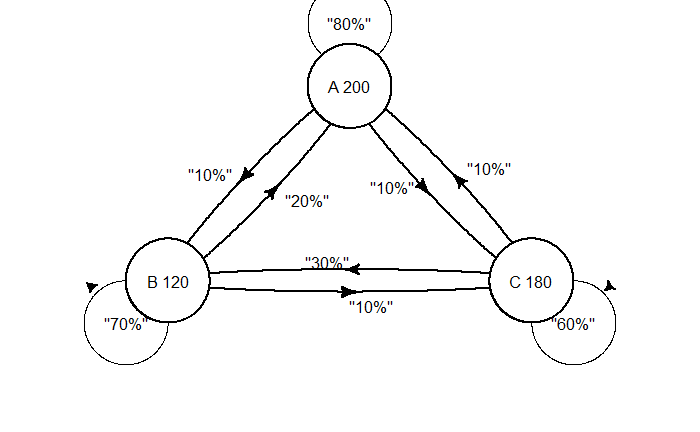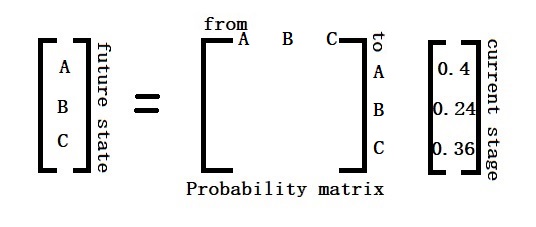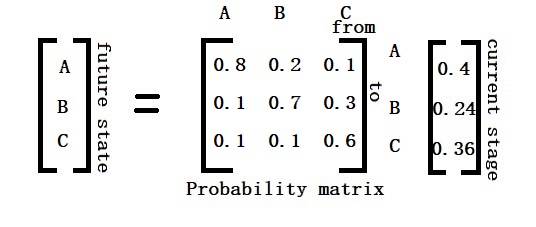In the last post, we started an example to demonstrate the objective of Markov processes.

The question is, what is the expected number of customers in shops A, B, and C in the following week?
The whole formulation is nothing but future state = present state x a probability matrix. The probability matrix, fundamental to making this translation, is developed from the diagram we created earlier.

The first row of the matrix are the probabilities: A to A, B to A and C to A
The second row: A to B, B to B and C to B
The third row: A to C, B to C and C to C

Perform the matrix multiplication between the two. Here are the R codes.
pM <- matrix(c(0.8, 0.1, 0.1, 0.2, 0.7, 0.1, 0.1, 0.3, 0.6), nrow = 3)
pM [,1] [,2] [,3]
[1,] 0.8 0.2 0.1
[2,] 0.1 0.7 0.3
[3,] 0.1 0.1 0.6pM <- matrix(c(0.8, 0.1, 0.1, 0.2, 0.7, 0.1, 0.1, 0.3, 0.6), nrow = 3)
past <- c(0.4, 0.24, 0.36)
future <- pM%*%past
future [,1]
[1,] 0.404
[2,] 0.316
[3,] 0.280What are Markov Chains: An Introduction: Michel van Biezen

